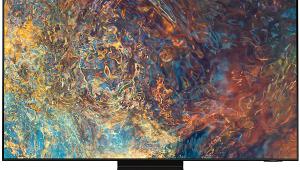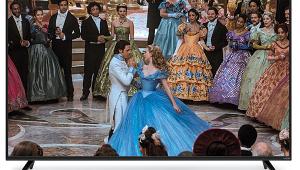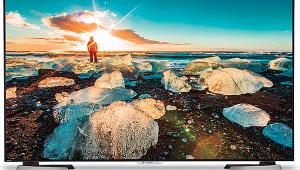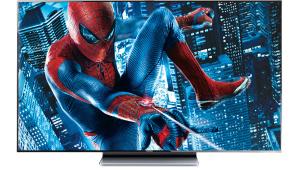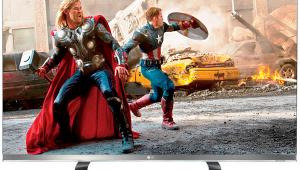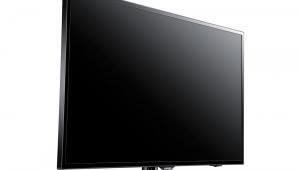Review: Panasonic TC-L42D30 LCD HDTV

Much of the R&D effort for Panasonic’s TVs gets funneled into plasma technology — with excellent results. (Check out the TC-P55VT30 in our Editors’ Choice Awards here.) But as we found out this time last year upon reviewing the company’s TC-L42D2, it also makes sets of the LCD persuasion. Quite a few of them, in fact.
Panasonic’s new TC-L42D30 picks up precisely where that earlier set left off. Like its predecessor, the L42D30 is a 42-inch LED-backlit model that uses an IPS (in-plane switching) LCD panel. IPS panels deliver the benefit of a wide viewing angle — something that’s a given with plasma but not LCD. (Many of the LCD TVs we review tend to have poor picture uniformity when viewed from an off-center seat.) Another thing the two TVs have in common is a 120-Hz refresh rate, along with Motion Picture Pro 4 processing, a feature that works to boost LCD’s typically low motion resolution and eliminate picture judder from film-based programs.The key new thing that Panasonic brought to the TC-L42D30 is its Viera Connect media streaming platform. As with other Panasonic TVs, the list of streaming options here is impressive: Netflix, Amazon VOD, Hulu Plus, Pandora, Skype, and more. (The company’s $150 TY-CC10W high-def-capable Skype camera is an extra option, as is its $80 DY-WL10 wireless networking adapter.) Panasonic’s entire LCD line lacks 3D capability — either a good or a bad thing, depending on your perspective. But the 3D curious can always look into the company’s extensive plasma lineup, a good chunk of which incorporates that feature.
Panasonic also gave the L42D30 a new, very much improved look, one that echoes the sleek cosmetics of its high-end plasma models. The bezel is thin, gloss black, and rounded at the corners, and the swiveling rectangular stand shares the bezel’s gloss black finish. Unlike with many other “skinny” TVs (depth here actually maxes out at 3 inches due to a flare-out near the bottom), most inputs are located directly on the back panel. Depending on your wiring scheme, this could make a wall-mount problematic, as most HDMI cable connectors require 1 or 2 inches of clearance. Fortunately, there’s at least one HDMI jack located on the side panel, alongside a USB port and SD card slot.
Panasonic’s remote has a backlit keypad, big buttons, and a layout that’s generally easy to work with. I had no problem handling the clicker in a dark room, which says quite a bit about its ergonomics. A large, green, centrally located button calls up the set’s Viera Cast menu. Panasonic also offers a free Viera Remote iPhone app to control its 2011 TVs, the D30 series included. The app lets you shift through the set’s various functions screen by screen, and it includes all the “hardware” buttons located on the remote itself.
